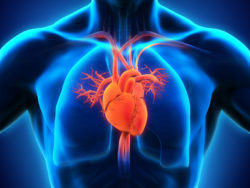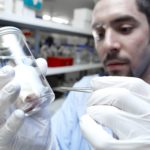Cardiovascular
 The increasing incidence of heart valve disease currently results in more than 300,000 heart valve replacement surgeries being conducted worldwide each year. Surgical options for heart valve replacement include mechanical valves, bioprosthetic valves, autografts and allografts, however all of these have inadequacies, such as a requirement for lifelong anticoagulation, limited durability, or a lack of capacity to grow.
The increasing incidence of heart valve disease currently results in more than 300,000 heart valve replacement surgeries being conducted worldwide each year. Surgical options for heart valve replacement include mechanical valves, bioprosthetic valves, autografts and allografts, however all of these have inadequacies, such as a requirement for lifelong anticoagulation, limited durability, or a lack of capacity to grow.
Decellularisation and Sterilisation of Heart Valve Scaffolds
Decellularised scaffolds as regenerative heart valve replacements are a promising tissue engineering approach for overcoming these limitations and providing an alternative with enhanced function and longevity.
 We have developed a process for human and porcine heart valves (aortic and pulmonary) that results in a decellularised scaffold with retained structural properties and biomechanical function, utilising our expertise in biological characterisation and biomechanical testing of tissues. The decellularised heart valve scaffolds have been demonstrated to provide excellent function in vivo, without inducing a chronic inflammatory response or calcifying, and repopulate with site appropriate stromal and endothelial cells. Current processing methods utilise aseptic handling and a liquid chemical sterilisation. To advance the production and clinical translation of these scaffolds, terminal sterilisation methods are being investigated.
We have developed a process for human and porcine heart valves (aortic and pulmonary) that results in a decellularised scaffold with retained structural properties and biomechanical function, utilising our expertise in biological characterisation and biomechanical testing of tissues. The decellularised heart valve scaffolds have been demonstrated to provide excellent function in vivo, without inducing a chronic inflammatory response or calcifying, and repopulate with site appropriate stromal and endothelial cells. Current processing methods utilise aseptic handling and a liquid chemical sterilisation. To advance the production and clinical translation of these scaffolds, terminal sterilisation methods are being investigated.
If you'd like to hear more, please contact:
Ex-vivo organ culture of cardiovascular decellularised scaffolds to assess regenerative cell response
Current surgical options for replacement of diseased or damaged cardiovascular tissue include vascular grafts for arterial bypass procedures and bioprosthetic aortic and mitral heart valves. Performance of these implants deteriorates over time and consequently many patients, particularly younger patients, need to undergo multiple medical interventions over their life-time. Implants created from decellularised tissue provide an ideal alternative, with reduced immunogenicity, capacity to promote tissue regeneration, and potential for enhanced longevity. Increased knowledge of the mechanisms of immune system acceptance and tissue regeneration of these biological scaffolds will advance biomaterial design by informing decisions on manufacturing processes and product enhancements.
We have developed an ex vivo cardiovascular organ culture model suitable for interrogating cellular events at the decellularised cardiovascular scaffold:tissue interface. This model will be used to characterise the innate and stromal cell responses, and determine the effect of the biological scaffold’s structural and bioactive factor composition on directing the cellular response.
If you'd like to hear more, please contact:
Assessing the functional performance of biological heart valves/roots
In order to predict the in vivo functional performance of replacement biological heart valves/roots it is imperative that appropriate pre-clinical test methods are developed and applied. Although international standards exist for synthetic valves, the viscoelastic behaviour of biological valves and their inherent complexity mean that these methods are not always appropriate. It is also important that the methods consider the performance of the valve/root system, to understand the full structure-function relationships, rather than test parts of the biological heart valves/roots in isolation. At Leeds we are developing appropriate pre-clinical test methods to predict in vivo functional performance. Such methods include assessment of hydrodynamic function, biomechanical properties, and currently under development is a method for predicting the real time wear of biological heart valves/roots.
If you'd like to hear more, please contact:
